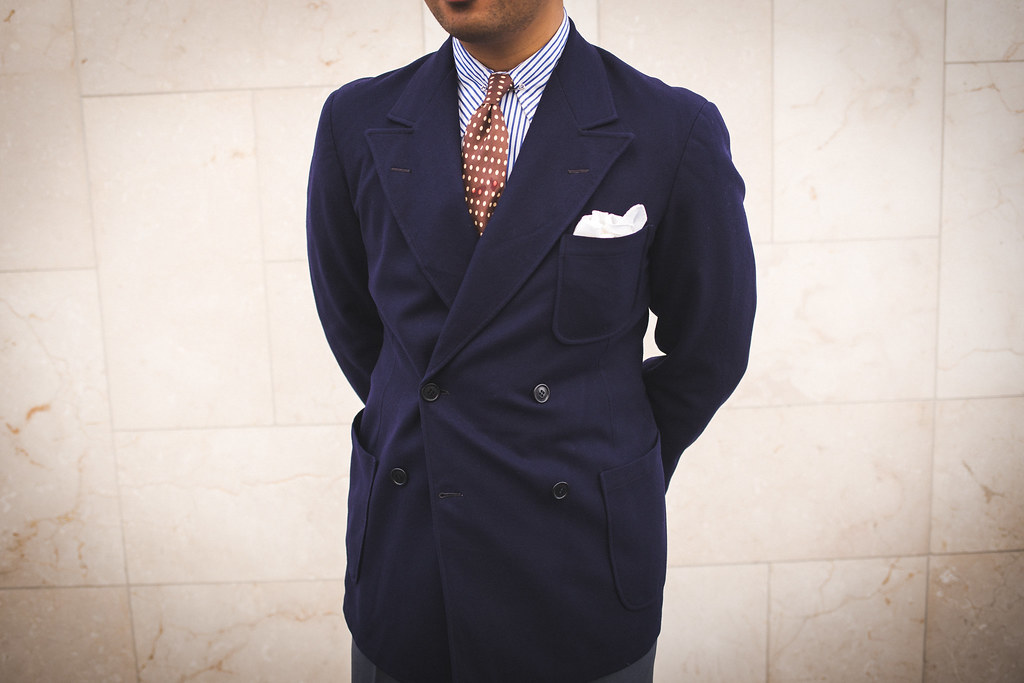
Phew. That title is a mouthful, isn’t it?
As I continue to be more intentional in my buying (instead of buying random thrifts for the sake of tailoring), I’ve decided that my money could be better used on obtaining grails, both for wear and use in a bespoke reproduction. One of the first ones was the 1930’s brown SB patch pocket suit (with gorgeous lapels). This jacket was the next one.
One random sunday, I decided to stop by Reese’s Vintage Pieces which houses the most dangerous and expensive garages in the world. Benny, the owner, had recently come back from a buying trip which meant that his racks were filled with new suits and sportcoats. To my chagrin (or pleasure?) most of them were 30’s belt backs.
As I’ve stated earlier, I wanted to be more specific in my buying. Heavy wools, flannels, and tweeds would do me no favors here in Southern California. While he did have some crazy stuff like this, some of it wouldn’t fit in my regular wardrobe. I was almost about to leave empty handed until I found this beautiful jacket.
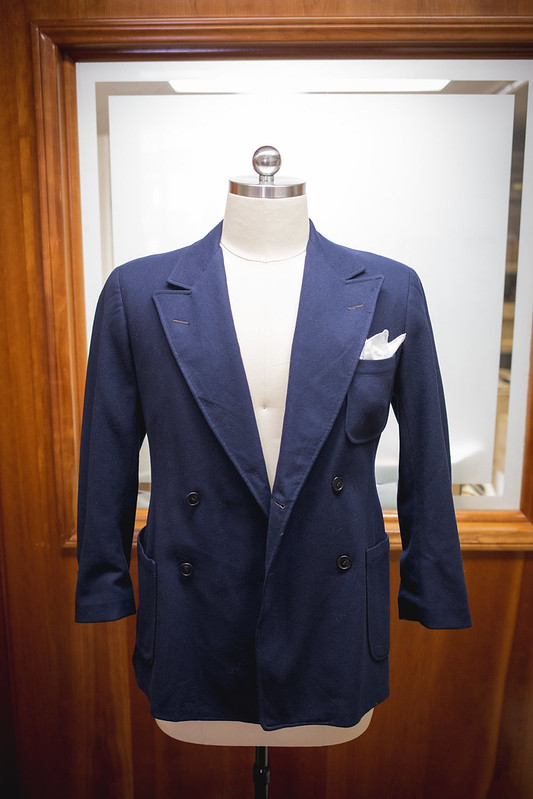
It was an unstructured 1930’s flannel DB suit with triple patch pockets. And a belt back. Cost me $350, but it was quite worth it in order to add it to my collection. I mean it had so many details that I just love and look for when buying vintage clothing.
I apologize for not fastening the jacket so you can see it properly, but the mannequin was too small. You can see right away that it has triple patch pockets, something you seldom see on DBs anymore. This results in a 4×2, since the breast patch pocket prevents the addition of the breast buttons. Note that the button stance is perfect, with the last row of buttons in line with the pockets. Bolder (1940s and onward) tend to have lower buttons, which results in a lower buttoning stance and is much more dated silhouette.
You can read more about how suit silhouettes changed by reading this general guide or my guest article on StyleForum.
The flannel is in great condition with some minor moth holes scattered in different places. You honestly wouldn’t be able to see them unless you were actively looking for them.
The jacket has a natural shoulder, which according to Benny was common for sportswear in the early to mid 1930’s. It was surprising to me because all of my 1930’s clothing (save for my Palm Beach and linen jackets) have shoulder padding, even if it wasn’t as excessive as the 1940s-1950s. I will say that there is a bit of padding at the sleeve head, so it’s not as natural as contemporary Italian pieces.
Here is the belt back! As I’ve said many times before, I love this detail. Not only does it add waist suppression and better movement (as I’ve stated in my vintage detail piece), but it adds something extra to the back. Compare this to jackets today which are “plain backed”. The waisting is accomplished by taking the excess fabric and turning them into pleats and anchoring them down with a half belt.
Obviously this detail isn’t done on jackets anymore (it’s more commonly found on overcoats) but that’s what makes this particular sportcoat special. My belt back is hardly the most interesting one, as you’ve seen ones that have big pleats that actually open as you move around!
The jacket has butterfly lining, which is common for unstructured, casual sportswear back in the 1930’s-40s. I like how the fabric allowance contains a part of the belt, so that it won’t be awkward to let out if it comes to that. Hopefully that won’t happen any time soon!
Being unstructured, there is no canvas in the garment at all (or any interior pockets for that matter). The flannel is doubled back for weight while the inside contains a small layer of cotton (for what, I don’t know). This is very comparable to the ivy jackets of the 1960’s and the soft, unstructured Italian tailoring that is all the rage today. As I talked to Benny, he said that not many of these types of jackets survived during the 1930’s, due to the depression. Heavier wools are still here today since they were more practical compared to this soft, “novelty” piece.
Overall, it’s a pretty great jacket that could be worn with anything: flannels, worsteds, chinos, and denim. That’s the best part about unstructured, soft clothing; you can dress it up or down as needed!
Wearing the Jacket
Since it’s basically a navy blazer, it’s best worn with grey trousers and black shoes. If I was being traditional, a SB jacket would’ve been best, but the DB adds a more rakish charm. As you can see, it fits extremely well! Would you have been able to tell that it was from the 1930’s if I didn’t tell you? That’s why unstructured soft tailoring from almost any era is extremely versatile and can definitely be worn today.
The pleated trousers are from the 1950’s and have actually been tapered to provide a slimmer, contemporary look. You might recognize them as they were worn to the opening of The Bloke, which overall is a very similar outfit. You’ll notice that while the jacket is old, it works perfectly with the silhouette of this outfit. I mean, just compare it to this. I keep telling ya’ll that vintage can definitely worn today without looking like a costume.
Man, big patch pockets are the best, especially at the breast pocket. They certainly provide a utilitarian and practical charm that is sometimes lost on modern tailoring. I’ve heard that DB’s shouldn’t have patch pockets because they are traditionally a “formal jacket” but obviously that’s false; DB’s had patches since the 1920’s. Plus this jacket is made of flannel, which is a more casual fabric. Back in the Golden Era (1920s-40s), menswear didn’t really give a crap about the modern rules we seem to be obsessed with today.
Styling wise, I took a page from Ethan Newton’s book. In an old Armoury video he wore a blue 3PC, with a club collar shirt and brown dot tie. I’ve been obsessed with that look ever since! I took the ideas here and gave them my own 1930’s spin. Unfortunately the tie I bought (a true vintage 1930’s one) was stained. I expect it’s a blood stain from a squib, as it was bought from Roxy’s, which is a film wardrobe warehouse. Still a great tie!
And yes, I love to mix patterns. Striped shirts and print ties were a big thing in the 1930’s and it’s something not many people do today. And by that I mean regular people not my colleagues on StyleForum. It’s a great way to add personality and vintage charm without going with a bold 1940’s tie (on the left, yeesh).
The belt back in action. You can tell that the jacket cuts a slim figure in the above pictures, and this how it works! High armholes and a waisted body is the best way to go for most classic menswear styles (unless you want the full bodied ivy style). Today, most tailors use darts on the sides in order give a figure, but I really wish that the belt back (and all of the crazy, complex ones) come back!
1930’s Belt Back from Reese’s Vintage Pieces, Custom Natty Shirt, 1930’s tie from Roxy’s Deluxe, 1950’s pleated trousers from Joyride Vintage, Allen Edmonds loafers (eBay)
Conclusion
I am so happy that I was able to get another one of my grails! Unlike most of the stuff in my true vintage collection, this jacket is actually able to be worn with contemporary pieces. That’s due to the fact that it shares a lot in common with the stuff you see today: soft shoulders, classic length, an unstructured body, and a good fit. The extra details like the triple patch pockets, horizontal peak lapels, and belt back add just enough vintage details to set it apart from almost anything else you see out there and result in it being a real grail for me. Either way, the whole outfit together makes for a pretty classic and timeless (ugh) ensemble.
Don’t worry. I’m definitely going to get this jacket replicated in the future, when I can afford bespoke. I know it looks great in flannel, but I could definitely forsee it as a great summer jacket, cut from fresco, cotton, or linen! I’ll probably request to add the inside pockets, since I need those places to carry my phone and wallet.
Can’t wait to see what other grails I’ll be able to obtain and share with you guys! Leave a comment below if you have your own grails that you’re looking out for.
Always a pleasure,
Ethan W.
Street x Sprezza
Photography by Ethan W. and his tripod

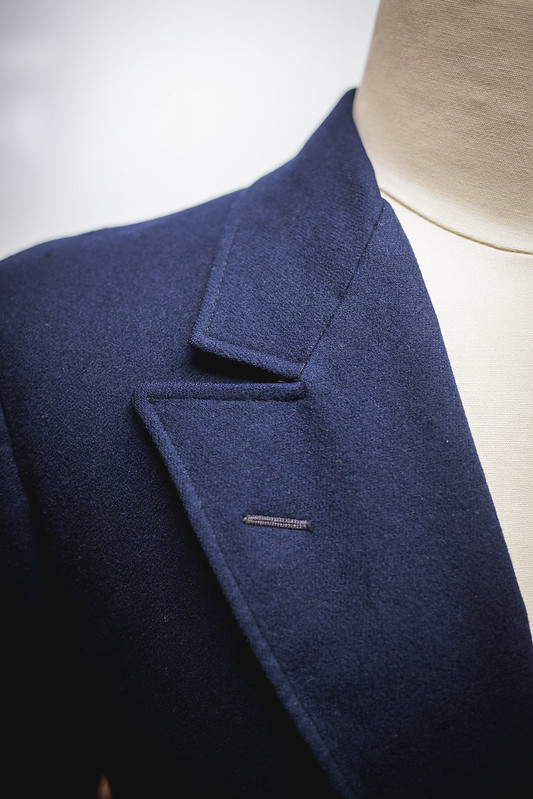
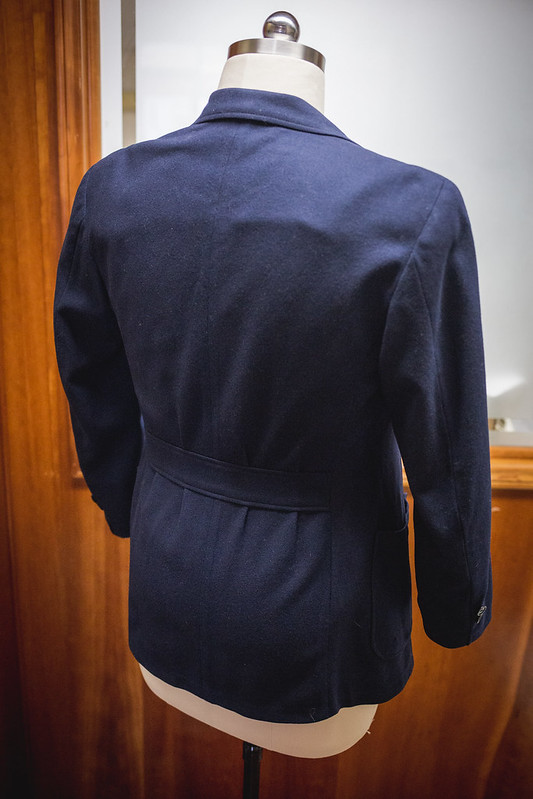

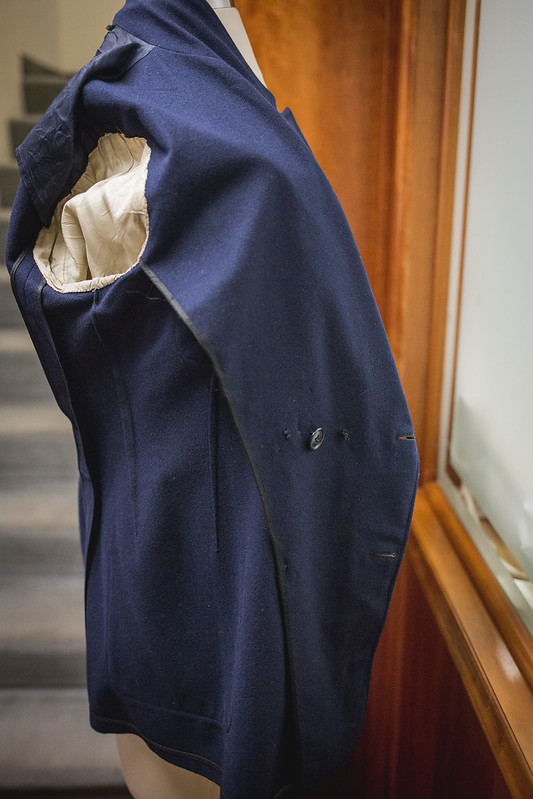
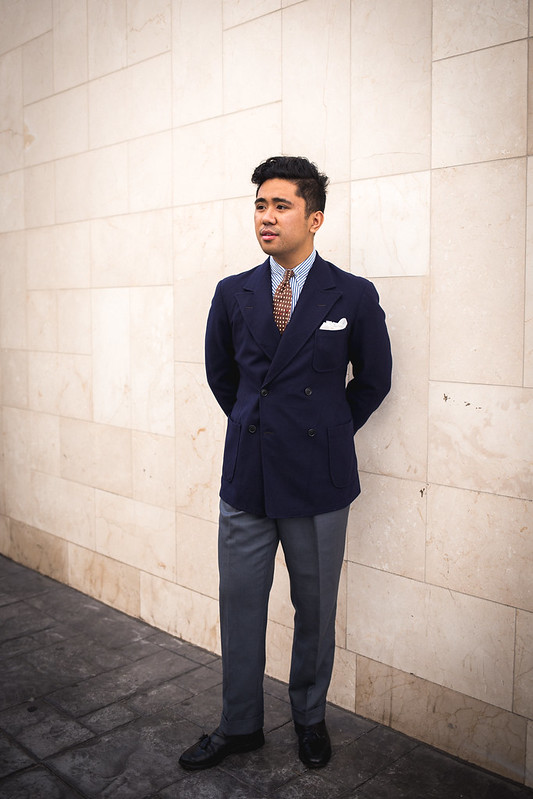
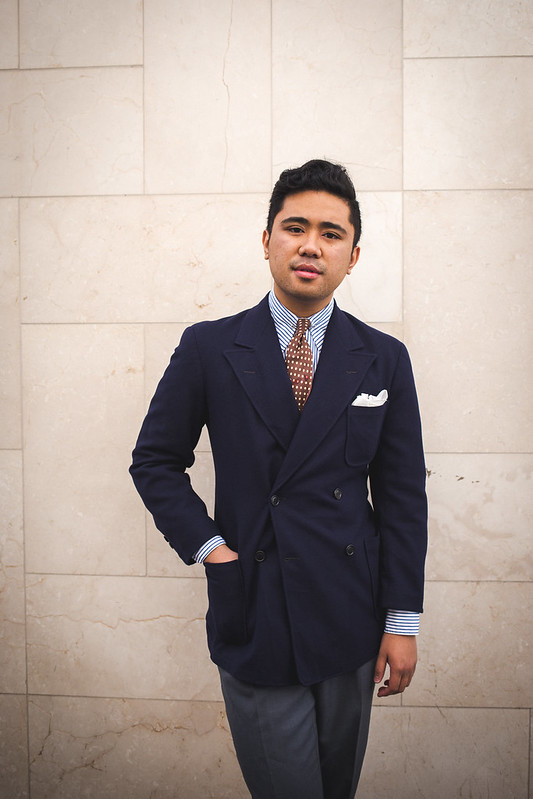
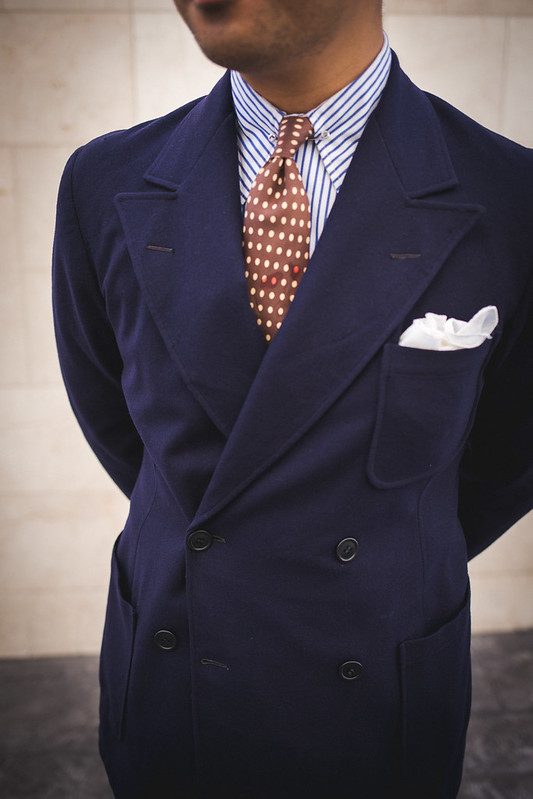
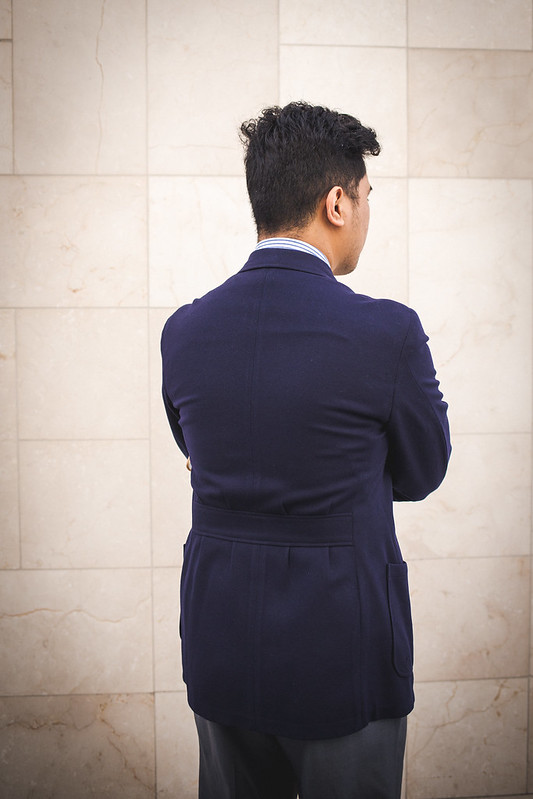
Gorgeous, a truly wonderful find! FYI Simon James Cathcart is thinking about offering a 6×2 30s DB navy in fresco next summer. Did you see the 1930s 14oz. soft tweed suits that just went on sale on his site? Perhaps little warm for SoCal, but they will be reappearing in other fabrics. http://www.simonjamescathcart.com/suits/
LikeLike
Thanks David!
Yes, I’m aware of that DB! I’m a lurker on the forum, haha. I might have to pick one up if the price is right!
I did see the tweed suits, but I’m definitely trying to buy more selectively. can’t wear tweed at all in SoCal!
LikeLike
Nice work, Ethan!
Do you think the sleeves are a tad too short?
LikeLike
I thought I wrote about it in the article, but I guess not! Yes, the sleeves are pretty short and I had them lengthened before wearing it out, but I think they’re still too short. I may try and get them done again, but I think it’s just something I have to deal with!
LikeLike